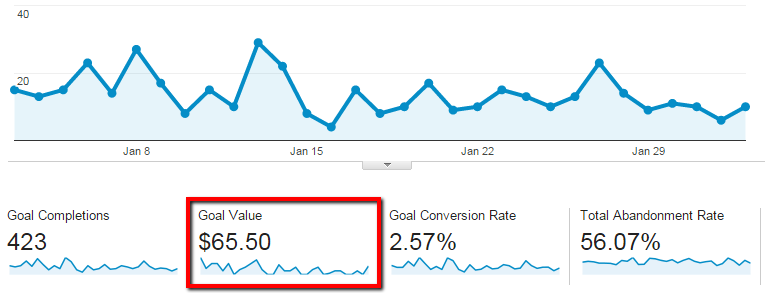What Data Is Google Analytics Goals Unable to Track: A Total Guide
What Data Is Google Analytics Goals Unable to Track: A Total Guide
Blog Article
Unveiling the Blind Spots: Comprehending What Google Analytics Goals Can not Measure
In the realm of electronic analytics, Google Analytics stands as an effective device for tracking and evaluating online user interactions. Comprehending what Google Analytics objectives can not gauge is crucial for getting a thorough view of individual behavior and involvement.
User Behavior on External Platforms
Recognizing exactly how individuals communicate on outside systems is important for maximizing on the internet methods. Outside platforms, such as social media sites networks, recommendation websites, and on-line discussion forums, play a significant duty in driving web traffic to a company's website. By examining individual actions on these systems, services can acquire valuable understandings into the performance of their advertising and marketing initiatives and the choices of their target audience.
One key facet of individual habits on exterior systems is the reference source. By tracking where the individuals are originating from, services can recognize which platforms are driving the most traffic to their web site. This information can help firms assign their sources better, concentrating on the systems that generate the most effective results.

Offline Conversions and Interactions
Evaluating user habits on outside platforms offers valuable understandings into on-line strategies; nevertheless, thinking about offline conversions and communications is just as crucial for a detailed understanding of a firm's overall efficiency. Offline conversions, such as in-store purchases or phone queries, play a considerable duty in several services' success.

Attribution Beyond Last Click
When delving into the realm of digital advertising and marketing analytics, it comes to be vital to look past the solitary touchpoint of the last click for an extra detailed understanding of attribution. While Google Analytics supplies useful understandings right into individual behavior, counting only on last-click acknowledgment can be restricting - what data is google analytics goals unable to track. Attribution designs that exceed the last click supply an extra nuanced view of the customer journey, considering all the touchpoints that result in a conversion
Attribution past the last click allows marketers to assign debt to various communications along the conversion course, offering a more clear photo of the effectiveness of various marketing networks. By exploring multi-touch click over here now acknowledgment models such as direct, time decay, or position-based acknowledgment, companies can much better allot their marketing budgets and enhance their approaches for optimal effect.
Recognizing the impact of each touchpoint in the conversion procedure is essential for making educated decisions and taking full advantage of ROI. By embracing attribution beyond the last click, companies can gain deeper understandings right into customer habits and tailor their advertising and marketing initiatives a lot more successfully.
Cross-Device and Cross-Browser Monitoring

Similarly, cross-browser monitoring complements cross-device monitoring by catching user behavior as they switch over between various web browsers. what data is google analytics goals unable to track Recognizing exactly how users connect with internet sites on different internet browsers can assist online marketers optimize their online experiences to ensure uniformity and functionality across various systems.
Qualitative Data and Customer Intent
Understanding individual intent via qualitative data evaluation is critical for establishing targeted electronic marketing approaches that reverberate with the demands and choices of the target market. Qualitative data supplies insights into the 'why' behind user activities, clarifying inspirations, feelings, and choices that measurable information alone can not record. By analyzing user responses, comments, and interactions, online marketers can discover beneficial details regarding customer intent, permitting them to customize their messaging, content, and offerings to better line up with what their target market is looking for.
Qualitative information additionally aids in understanding the context in which customers involve with a website or application. This contextual understanding allows marketing professionals to produce more relevant and personalized experiences, ultimately driving greater involvement and conversion prices. By delving right into individual intent via qualitative information analysis, organizations can acquire a deeper understanding of their target audience, resulting in much more effective advertising and marketing approaches that meet customers' expectations and demands.
Verdict
In verdict, Google Analytics objectives have restrictions in determining user actions on outside systems, offline conversions, attribution past last click, cross-browser and cross-device tracking, and qualitative information related to individual intent. what data is google analytics goals unable to track. It is important for companies to be mindful of these unseen areas in order to supplement their information analysis with other devices and approaches to acquire an extra extensive understanding of their target market and improve their overall electronic marketing methods
By assessing user actions on these platforms, organizations can obtain important understandings right into the performance of their marketing efforts and the choices of their target audience.
Analyzing customer behavior on outside systems supplies beneficial understandings into on-line strategies; nonetheless, thinking about offline conversions and interactions is equally imperative for a detailed understanding of a business's overall performance.In electronic advertising and marketing analytics, relocating beyond last-click attribution to explore cross-device and cross-browser monitoring is essential for obtaining a holistic understanding of customer communications throughout various systems and devices. By analyzing user feedback, remarks, and communications, marketers can reveal important info concerning customer intent, enabling them to customize their messaging, web content, and offerings to better straighten with what their audience is seeking.
By delving into individual intent through qualitative data analysis, organizations can gain a much deeper understanding of their target reference audience, leading to extra efficient marketing strategies that satisfy customers' needs and assumptions.
Report this page